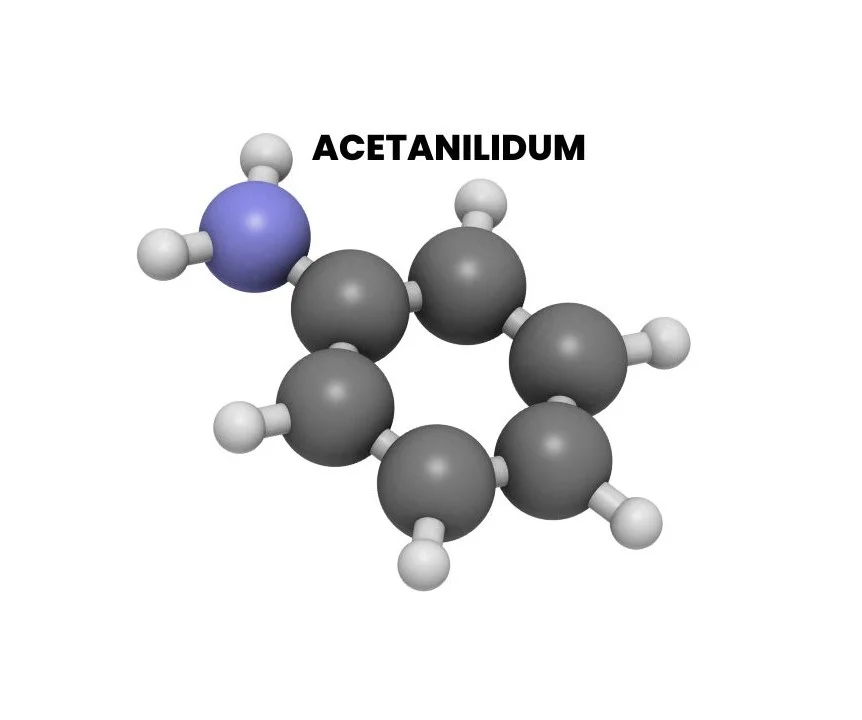Acetanilidum, also known as Antifebrin, has a historical background rooted in its synthetic origin. Developed from aniline, it gained attention for its antipyretic and analgesic properties.
However, its use declined due to concerns about toxicity and side effects, leading to regulatory restrictions.

PHARMACOLOGICAL SOURCE
- Common Name: Acetanilide, Antifebrin
- Chemical Formula: C8H9NO
- Pharmacological Class: Analgesic, Antipyretic
- Source: Synthetic compound derived from aniline.
DRUG PHARMACOLOGY
Actions
- Depresses heart, respiration, and blood pressure.
- Lowers body temperature.
- Causes cyanosis and collapse.
- Increases susceptibility to cold.
- Destroys red blood corpuscles, leading to pallor.
- Associated with enlarged sensation in the head.
- Fainting episodes.
- May contribute to moral depravity.
- Impacts optic discs, causing pallor, with contracted visual fields and shrinking retinal vessels.
- Weakens the heart, leading to irregularities, blue mucous membranes, albuminuria, and oedema of feet and ankles.
HOMEOPATHIC INDICATIONS
- Used For:
- Sedative and antipyretic purposes in conventional medicine.
- Various forms of headache and neuralgia.
- Potency: Typically used in the homeopathic form at the third potency.
FREQUENTLY ASKED QUESTIONS
- What is Acetanilidum used for in conventional medicine?
- Acetanilidum is primarily used as a sedative and antipyretic for treating headaches and neuralgia.
- What are the distinctive features of its pharmacological actions?
- It depresses heart function, respiration, and blood pressure, leading to a lowering of body temperature.
- Additionally, it increases susceptibility to cold.
- How does Acetanilidum affect the cardiovascular system?
- It weakens the heart, causing irregularities, and is associated with symptoms like blue mucous membranes, albuminuria, and oedema of the feet and ankles.
- What are the optic symptoms associated with Acetanilidum?
- Optic symptoms include pallor of optic discs, contracted visual fields, and shrinking retinal vessels. Mydriasis (dilated pupils) may also occur.
- What is the recommended potency for homeopathic use?
- In homeopathy, Acetanilidum is typically used in the third potency.
In homeopathy, its application is based on the principle of potentization, where substances are diluted and succussed to enhance their healing properties while minimizing toxicity.
As with any medicinal substance, it is crucial to approach Acetanilidum with caution and, in the homeopathic context, under the guidance of a qualified practitioner.
